The Societé anonyme belge d'Exploitation de la Navigation aérienne, better known by the acronym Sabena or SABENA, was the national airline of Belgium from 1923 to 2001, with its base at Brussels National Airport. After its bankruptcy in 2001, SN Brussels Airlines was formed through a takeover of former subsidiary Delta Air Transport and took over part of Sabena's assets in February 2002, which became Brussels Airlines after a merger with Virgin Express in March 2007. The airline's corporate headquarters were located in the Sabena House on the grounds of Brussels Airport in Zaventem.

A stick shaker is a mechanical device designed to rapidly and noisily vibrate the control yoke of an aircraft, warning the flight crew that an imminent aerodynamic stall has been detected. It is typically present on the majority of large civil jet aircraft, as well as most large military planes.

The Consolidated C-87 Liberator Express was a transport derivative of the B-24 Liberator heavy bomber built during World War II for the United States Army Air Forces. A total of 287 C-87s were officially delivered from Consolidated Aircraft plant in Fort Worth, Texas. The plant also developed and delivered a USAAF flight engineer trainer designated as the AT-22. The AAF C-87A was an executive transport version of the C-87. The United States Navy VIP transport designated as the RY. The last development was a Navy contracted, single tail version with an extended fuselage. Built in San Diego, its USN designation was RY-3 and the AAF had order the design as the C-87C. Those were cancelled and allotted to a Royal Air Force VIP transport designated as the Liberator C.IX
Martin Caidin was an American author, screenwriter, and an authority on aeronautics and aviation.

The High and the Mighty is a 1954 American aviation disaster film, directed by William A. Wellman, and written by Ernest K. Gann, who also wrote the 1953 novel on which his screenplay was based. Filmed in WarnerColor and CinemaScope, the film's cast was headlined by John Wayne, who was also the project's co-producer. Wayne stars as a veteran airline first officer, Dan Roman, whose airliner has a catastrophic engine failure while crossing the Pacific Ocean. The film's supporting cast includes Claire Trevor, Laraine Day, Robert Stack, Jan Sterling, Phil Harris, and Robert Newton. Composer Dimitri Tiomkin won an Oscar for his original score, while his title song was also nominated for an Oscar; it did not actually appear in the theatrical release prints, nor in its much later restoration. The film received mostly positive reviews and grossed $8.5 million on its theatrical release.
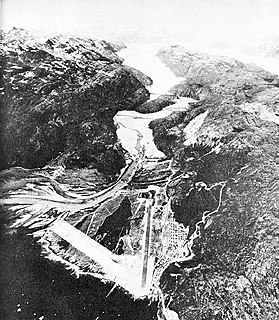
Bluie West One, later known as Narsarsuaq Air Base and Narsarsuaq Airport, was built on a glacial moraine at what is now the village of Narsarsuaq, near the southern tip of Greenland. Construction by the United States Army began in June 1941. The first aircraft landed there in January 1942, as a link in the North Atlantic air ferry route in World War II. The base had a peak population of about 4,000 American servicemen, and it is estimated that some 10,000 aircraft landed there en route to the war in Europe and North Africa.
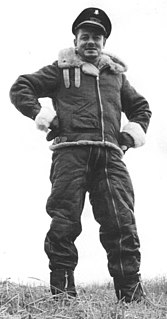
Ernest Kellogg Gann was an American aviator, author, sailor, and conservationist. He is best known for his novels and memoirs about early aviation and nautical adventures. Some of his more famous aviation novels include The High and the Mighty and Island in the Sky, both of which were turned into Hollywood movies starring John Wayne. Gann's classic memoir of early commercial aviation, Fate Is the Hunter, is still in print today and considered by many one of the greatest aviation books ever written. Some of Gann's nautical-themed novels include Fiddler's Green and Soldier of Fortune, which were also turned into major motion pictures.
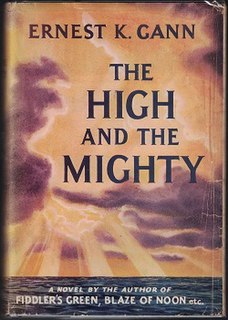
The High and the Mighty is a 1953 novel by Ernest K. Gann about an airline flight from Honolulu to San Francisco. Just past the halfway point, or the point of no return, the flight has a catastrophic engine failure puncturing the wing and fuel tanks. As the flight crew struggles to get the damaged airliner to safety, human drama unfolds for both the crew and passengers.

Island in the Sky is a 1953 Warner Bros. American aviation adventure drama film written by Ernest K. Gann based on his 1944 novel of the same name, directed by William A. Wellman and starring and coproduced by John Wayne. Because of its realistic depiction of an actual aircraft crash, some consider the film as among the classic aviation films. The film also features Andy Devine, Lloyd Nolan, James Arness and Paul Fix.
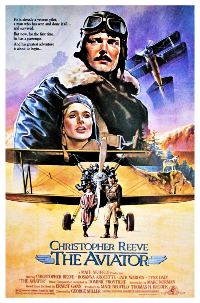
The Aviator is a 1985 American aviation adventure drama film directed by George T. Miller and starring Christopher Reeve and Rosanna Arquette.
A stick pusher is a device installed in some fixed-wing aircraft to prevent the aircraft from entering an aerodynamic stall. Some large fixed-wing aircraft display poor post-stall handling characteristics or are vulnerable to deep stall. To prevent such an aircraft approaching the stall the aircraft designer may install a hydraulic or electro-mechanical device that pushes forward on the elevator control system whenever the aircraft's angle of attack reaches the pre-determined value, and then ceases to push when the angle of attack falls sufficiently. A system for this purpose is known as a stick pusher.
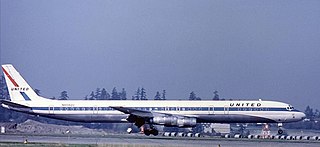
United Airlines Flight 173 was a scheduled flight from John F. Kennedy International Airport in New York City to Portland International Airport in Portland, Oregon, with a scheduled stop in Denver, Colorado. On December 28, 1978, the aircraft flying this route ran out of fuel while troubleshooting a landing gear problem and crashed in a suburban Portland neighborhood near NE 157th Avenue and East Burnside Street, killing 10 on board.

Fate Is the Hunter is a 1964 American black-and-white aviation disaster film from 20th Century Fox, produced by Aaron Rosenberg, directed by Ralph Nelson, that stars Glenn Ford, Nancy Kwan, Suzanne Pleshette and Rod Taylor. Fate Is the Hunter also features Jane Russell, Nehemiah Persoff, Wally Cox, and Mark Stevens. Dorothy Malone also makes an uncredited appearance. The film features an early film score by composer Jerry Goldsmith.
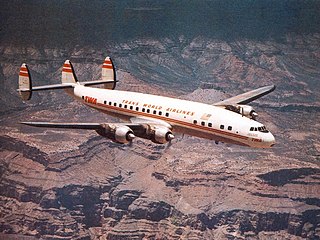
The Grand Canyon mid-air collision occurred in the western United States on Saturday, June 30, 1956, when a United Airlines Douglas DC-7 struck a Trans World Airlines Lockheed L-1049 Super Constellation over Grand Canyon National Park, Arizona. All 128 on board both airplanes perished, making it the first commercial airline incident to exceed one hundred fatalities. The airplanes had departed Los Angeles International Airport minutes apart for Chicago and Kansas City, respectively. The collision took place in uncontrolled airspace, where it was the pilots' responsibility to maintain separation. This highlighted the antiquated state of air traffic control, which became the focus of major aviation reforms.
Transocean Air Lines was established in 1946 as ONAT based in Oakland, California. The airline was renamed to Transocean Air Lines the same year. The Transocean name was also used in 1989 by another US-based air carrier, TransOcean Airways, which previously operated as Gulf Air Transport.
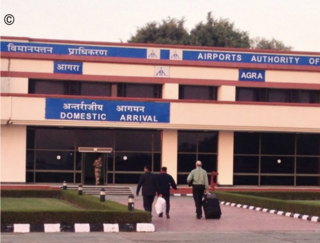
Agra Airport is a military airbase and public airport serving the city of Agra, in the state of Uttar Pradesh, India. The air force station is one of the largest airbases of the Indian Air Force (IAF) and has been synonymous with the Taj Mahal for over half a century. On 15 August 2007, the airbase celebrated its sixtieth anniversary.

The Douglas DC-2 is a 14-passenger, twin-engined airliner that was produced by the American company Douglas Aircraft Company starting in 1934. It competed with the Boeing 247. In 1935, Douglas produced a larger version called the DC-3, which became one of the most successful aircraft in history.

Eastern Air Lines Flight 605 was a domestic flight in the US from Newark to Miami on May 30, 1947. The flight crashed near Bainbridge, Maryland, causing the deaths of all 53 passengers and crew on board in what was then the worst disaster in the history of North American commercial aviation.
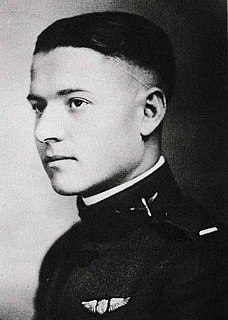
Eyer L. "Slonnie" Sloniger was the first chief pilot and holder of pilot seniority #1 at American Airlines. He later became chief pilot and director of flight operations at Matson Airlines.















